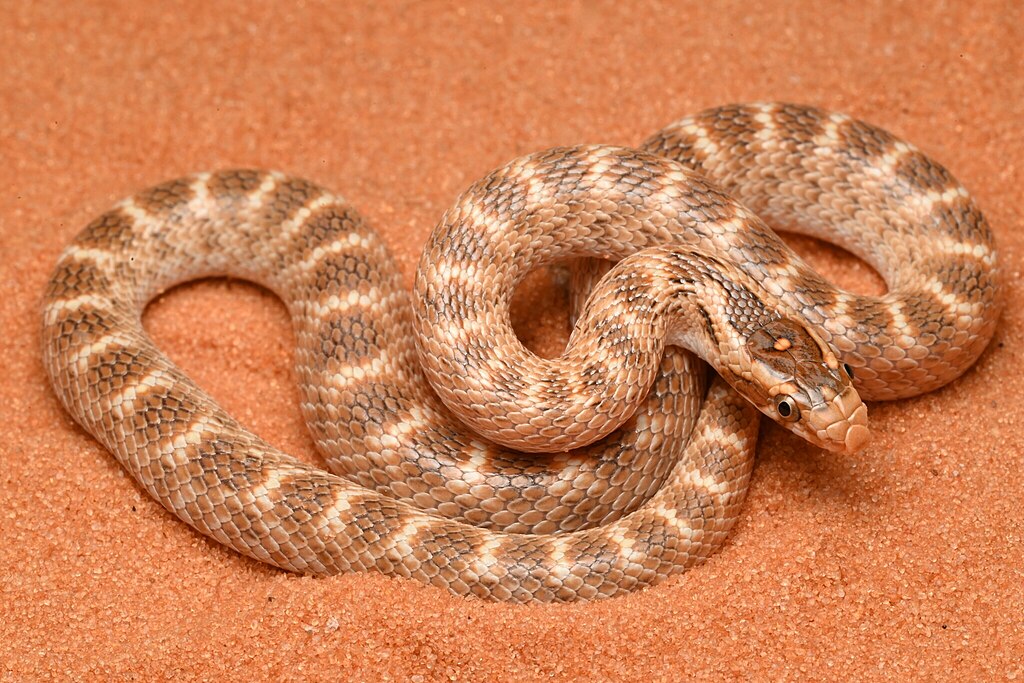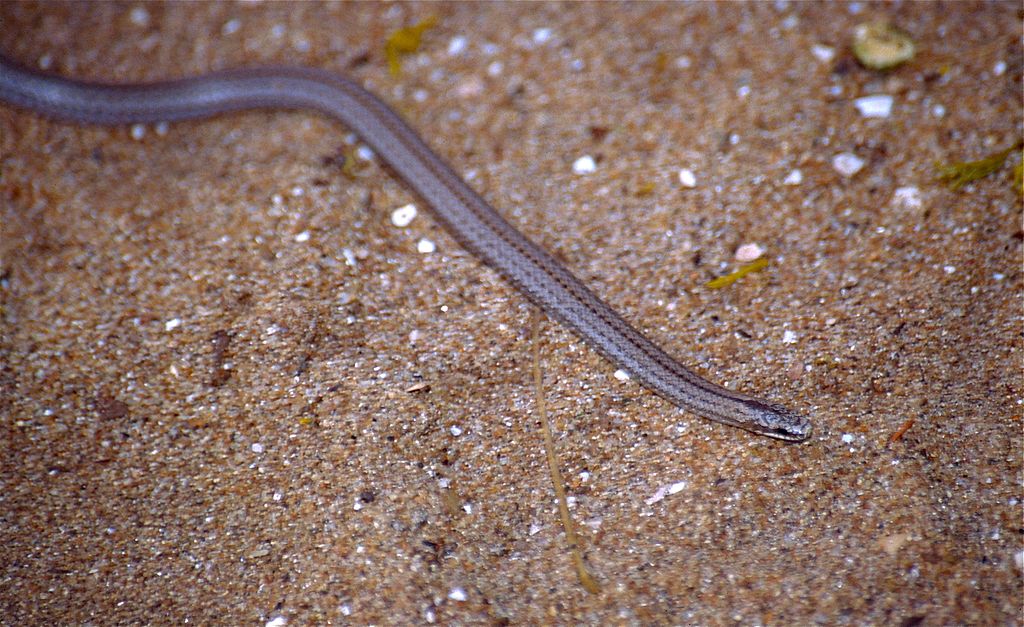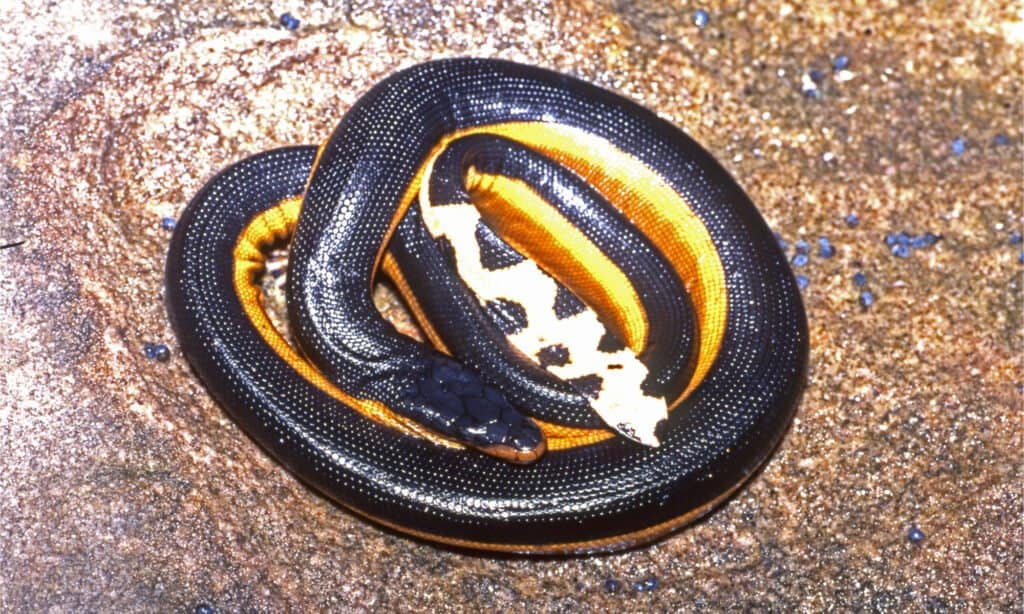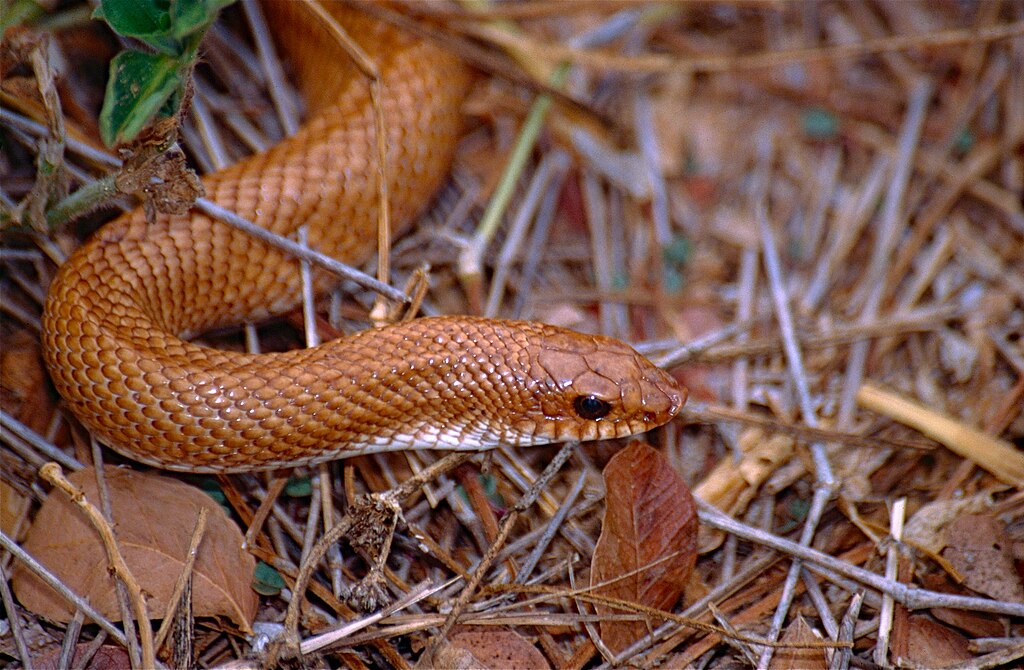For snake owners and wildlife enthusiasts alike, monitoring the health of these remarkable reptiles often involves paying close attention to their droppings. While it might not be the most glamorous aspect of snake care, examining fecal matter provides valuable insights into a snake’s overall wellbeing. Snake droppings can reveal information about dietary habits, potential parasitic infections, hydration levels, and various health conditions. By understanding what constitutes normal snake excrement and recognizing warning signs in abnormal droppings, keepers can identify health issues early and seek appropriate veterinary care before conditions worsen. This comprehensive guide will explore how snake droppings serve as a window into reptilian health, helping both novice and experienced snake handlers better care for these fascinating creatures.
The Basics of Healthy Snake Droppings

Normal, healthy snake excrement typically consists of two distinct parts: a dark, solid portion (feces) and a white or yellowish portion (urates). The dark section contains digested food waste, while the white chalky substance represents the snake’s processed urinary waste. In healthy snakes, these droppings should have a consistent, firm texture—neither too hard nor too watery. The frequency of elimination varies by species, age, and feeding schedule, with most adult snakes defecating approximately 3-7 days after consuming a meal. Fresh, normal droppings typically have a mild odor that, while not pleasant, shouldn’t be overwhelmingly foul or pungent. Understanding these baseline characteristics creates a foundation for recognizing when something might be amiss with your serpentine companion’s digestive system.
Color Variations and What They Indicate

The color of snake droppings provides significant diagnostic information about your reptile’s health status. Healthy fecal matter typically appears dark brown to black, reflecting the digestive breakdown of prey animals. Green-tinged droppings often indicate bile presence, which can be normal in small amounts but concerning in excess. Yellow or orange coloration might suggest issues with liver function or protein digestion. Red or rust-colored streaks warrant immediate attention as they typically indicate blood in the stool, potentially signaling internal bleeding, parasitic infections, or gastrointestinal inflammation. Gray or extremely pale droppings, particularly when consistently observed, might indicate pancreatic issues or malabsorption of nutrients. By monitoring color changes over time, handlers can track health patterns and identify potential issues before they become severe.
Consistency Changes as Health Indicators

The consistency of snake droppings serves as a reliable barometer for digestive health and hydration status. Optimal fecal matter should maintain a well-formed, somewhat firm consistency that holds its shape while not appearing excessively dry or crumbly. Watery or diarrhea-like droppings often indicate digestive disturbances, potentially stemming from bacterial infections, dietary issues, or parasitic presence. Conversely, extremely dry, hard droppings typically signal dehydration issues, which can stem from insufficient humidity levels or inadequate water access. Some snakes may occasionally produce slightly looser stool after consuming particularly large meals or during the initial stages of digestion. Persistent changes in consistency, however, particularly when accompanied by other behavioral changes such as reduced appetite or unusual lethargy, warrant veterinary consultation to identify and address underlying causes.
Identifying Parasites Through Droppings

One of the most valuable diagnostic aspects of examining snake excrement is the ability to detect parasitic infections. Various internal parasites, including nematodes (roundworms), cestodes (tapeworms), and protozoans (like coccidia or amoeba), may be visible in or detectable from fecal samples. In some cases, keepers might observe actual worms or segments in the droppings, particularly with larger parasites like roundworms, which appear as white or cream-colored, string-like structures. More commonly, parasite eggs require microscopic examination by a veterinarian through a procedure called fecal flotation. Signs that might indicate parasitic presence include unusual mucus in the stool, intermittent diarrhea, undigested food in feces, or droppings with abnormal odor. Regular fecal examinations by a reptile veterinarian, typically recommended annually for captive snakes, can detect parasitic infections before they cause significant health problems.
Urate Characteristics and Kidney Function

The urate portion of snake droppings—the white, chalky component—offers valuable insights into kidney function and overall hydration status. In healthy snakes, urates should appear white to slightly yellow-tinged and maintain a soft, toothpaste-like consistency. Bright yellow, orange, or green urates often indicate potential liver problems or dehydration issues that require attention. Gritty or extremely hard urates suggest chronic dehydration, which can lead to more serious kidney problems if not addressed promptly. Occasionally, pink-tinged urates may appear after large meals due to the breakdown of blood from prey items, but persistent discoloration warrants veterinary examination. The proportion of urates to feces also provides information—excessive urate production might indicate protein-rich diet issues or kidney strain, while insufficient urate production could suggest nutritional deficiencies or kidney disease.
Frequency Patterns and Their Significance

The timing and regularity of elimination provides critical information about a snake’s digestive efficiency and overall health. Most healthy snakes establish a relatively consistent defecation pattern based on their feeding schedule, typically eliminating waste 3-7 days after consuming prey. Significant deviations from established patterns, such as prolonged constipation or unusually frequent defecation, often indicate underlying health concerns. Constipation may result from dehydration, improper temperature gradients that slow digestion, impaction from inappropriate substrate, or more serious conditions like internal blockages. Conversely, unusually frequent defecation, particularly when droppings appear poorly formed, suggests potential digestive disorders, parasitic infections, or dietary intolerances. Tracking and documenting your snake’s elimination schedule creates a baseline that helps identify subtle changes before they develop into more serious conditions requiring intensive veterinary intervention.
Undigested Food in Droppings

Finding significant amounts of undigested food in snake droppings serves as a red flag for potential digestive system problems. While occasional small bone fragments or scales from prey animals can be normal, larger pieces of undigested muscle tissue, organs, or fur indicate incomplete digestion that warrants further investigation. Common causes include temperatures that fall below optimal ranges for proper digestion, particularly during the critical 24-48 hours after feeding. Underlying health conditions such as bacterial infections, parasitic infestations, or digestive enzyme deficiencies may also contribute to poor digestive efficiency. Stress factors, including inappropriate handling after feeding, inadequate hiding places, or the presence of potential predators near the enclosure, can similarly disrupt normal digestive processes. Consistently observing undigested food in droppings necessitates reviewing husbandry practices, particularly heating elements and temperature regulation, and potentially consulting with a reptile veterinarian to rule out more serious health conditions.
Mucus, Blood, and Other Abnormal Components

The presence of abnormal substances in snake droppings provides immediate cause for concern and often necessitates veterinary attention. Excessive mucus coating or embedded within fecal matter typically indicates inflammation of the gastrointestinal tract, potentially from parasitic infection, bacterial imbalance, or dietary sensitivities. Frank blood (bright red) in droppings suggests active bleeding in the lower digestive tract, while digested blood (appearing dark or black) indicates bleeding further up the digestive system. Unusual foreign material, such as substrate particles like wood chips or sand, might indicate pica (consumption of non-food items) or accidental ingestion that could lead to impaction. Foam or bubbles associated with droppings often indicate excessive gas production, typically from bacterial imbalances or fermentation of undigested food. Any of these abnormal components, particularly when observed more than once or in combination with behavioral changes, warrant prompt professional evaluation to identify and address underlying causes.
Seasonal and Behavioral Impacts on Droppings

Seasonal changes and natural behavioral cycles significantly influence snake elimination patterns and dropping characteristics. During brumation (the reptilian version of hibernation), snakes naturally reduce their metabolic rate, which dramatically decreases or even completely halts defecation for extended periods. Breeding season activities, particularly in females developing eggs or carrying young (in viviparous species), can alter nutritional requirements and waste production patterns. Many snakes naturally fast before shedding, which subsequently affects their elimination schedule, often resulting in larger-than-normal droppings after completing the shed cycle. Environmental stressors, including temperature fluctuations, changes in enclosure setup, or the introduction of new animals nearby, can temporarily disrupt normal digestive processes. Understanding these natural variations helps keepers distinguish between normal cyclical changes and potentially problematic deviations that require intervention or veterinary consultation.
Species-Specific Differences in Droppings

Snake droppings vary considerably across different species, reflecting evolutionary adaptations to diverse diets and habitats. Arboreal species like green tree pythons and emerald tree boas often produce more compact, firmer droppings with relatively higher urate content compared to primarily terrestrial species. Aquatic and semi-aquatic snakes such as water snakes and anacondas frequently produce softer, more watery feces adapted to their moisture-rich environments without necessarily indicating digestive distress. Diet specialists, like egg-eating snakes, produce distinctive waste that reflects their highly specialized nutrition sources, often with unique calcium compositions from digested eggshells. Even within related species, size differences significantly impact dropping volume and appearance, with larger specimens naturally producing more substantial waste compared to smaller relatives. Keepers should research the normal elimination patterns specific to their snake species rather than applying generalized standards across all serpents.
Using Droppings for Health Monitoring

Implementing a systematic approach to monitoring snake droppings establishes a valuable health tracking system for proactive reptile care. Maintaining a simple log that records defecation dates, descriptions of consistency and appearance, and any unusual characteristics creates a personalized health baseline for individual specimens. Photographing unusual droppings provides valuable documentation for veterinary consultations and helps track subtle changes over time that might otherwise go unnoticed. Collecting fresh samples for periodic veterinary analysis, even in apparently healthy animals, enables early detection of subclinical parasitic infections or nutritional imbalances before they manifest as visible symptoms. Many experienced keepers integrate dropping checks into their regular maintenance routine, examining waste during enclosure cleaning to minimize additional handling stress while maintaining consistent health monitoring. This systematic approach transforms casual observation into a powerful preventative health tool that significantly improves long-term reptile welfare.
When to Seek Veterinary Help

While understanding normal variation in snake droppings helps with routine monitoring, certain conditions necessitate professional veterinary intervention. Prolonged constipation exceeding two weeks beyond the expected elimination timeframe, particularly when accompanied by abdominal swelling or discomfort, requires immediate evaluation to prevent potentially fatal impaction. Any blood in droppings, whether bright red or dark tarry material, indicates internal bleeding that demands professional diagnosis and treatment. Persistent diarrhea lasting more than two consecutive defecations risks dangerous dehydration and electrolyte imbalances that home care cannot adequately address. Drastic color changes in either fecal matter or urates, especially when accompanied by behavioral changes like reduced activity or feeding refusal, signal potentially serious metabolic or digestive disorders requiring diagnostic testing. The presence of visible parasites or excessively mucus-covered droppings similarly warrants collecting a fresh sample for veterinary analysis to identify specific pathogens and appropriate treatment protocols.
Collecting and Preserving Samples for Veterinary Analysis

Properly collecting and preserving fecal samples maximizes diagnostic value when veterinary analysis becomes necessary. Always use clean, non-porous containers with secure lids, preferably unused specimen containers available from veterinary offices or pharmacies, rather than repurposed food containers that might contain residual chemicals. For optimal parasite detection, collect samples within 12 hours of defecation, as many parasitic eggs deteriorate rapidly when exposed to air and room temperature. If immediate veterinary evaluation isn’t possible, refrigeration (not freezing) preserves most diagnostic elements for 24-48 hours while minimizing bacterial overgrowth that might complicate analysis. Include detailed information with samples, including the snake’s species, age, feeding history, and any observed symptoms or abnormalities in behavior. For particularly concerning samples, some veterinarians recommend dividing the sample, refrigerating half and preserving half in special formalin solution they can provide, which maintains parasite structures for more extended periods.
Understanding Your Snake Through Its Droppings

Monitoring snake droppings might not be the most appealing aspect of reptile keeping, but it provides invaluable insights into your serpent’s internal health that might otherwise remain invisible until conditions become severe. By developing familiarity with your specific snake’s normal elimination patterns and characteristics, you create a powerful early warning system for detecting health changes that require attention. Regular, attentive observation of waste products complements other health monitoring practices like weight tracking, shed quality assessment, and behavior observation, creating a comprehensive approach to reptile wellness. While droppings alone cannot diagnose specific conditions, they offer critical clues that guide both home care adjustments and professional veterinary diagnostics. For responsible snake keepers, this otherwise unglamorous aspect of husbandry represents an essential component of providing optimal care that supports these remarkable reptiles throughout their potentially long lifespans.





